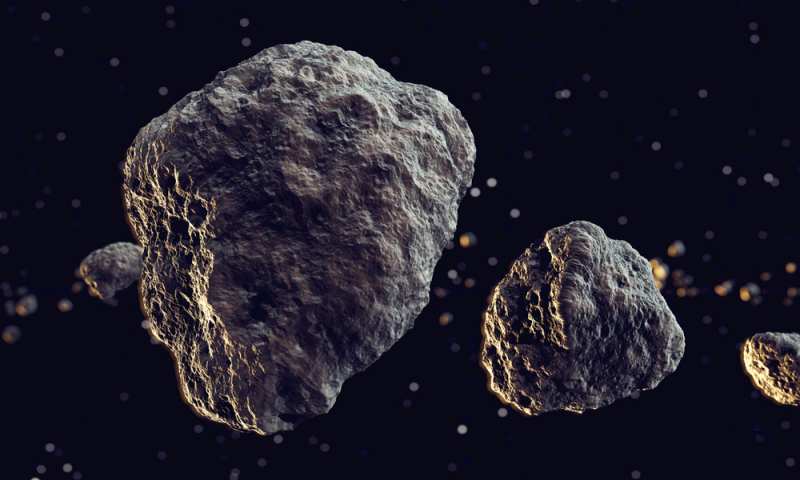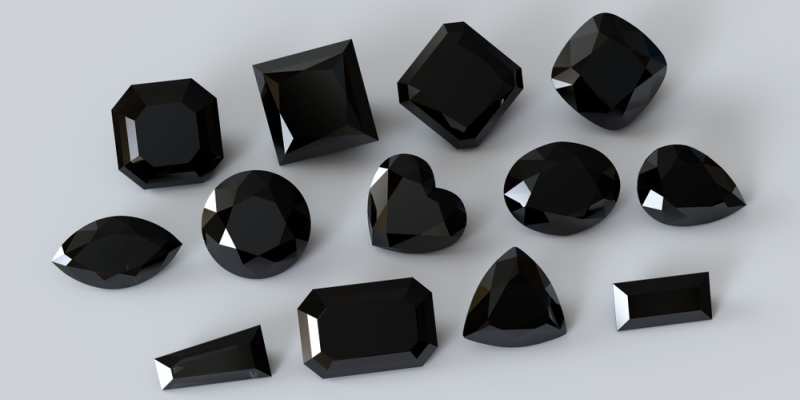Black diamonds remain somewhat of a puzzle to us. While scientists have made significant progress in understanding them, there are still many aspects that elude our knowledge. One particular mystery that captivates our curiosity is whether black diamonds possess magnetic properties.
At first glance, this may seem like a straightforward question that requires minimal investigation. However, the reality is quite different. It’s not as simple as attempting to attach them to a magnetized metal surface and observing the outcome. But fret not, we have diligently gathered information to shed light on this intriguing subject.
Without further ado, let’s embark on our quest for answers!
DESIGN YOUR OWN ENGAGEMENT RING: START WITH A SETTING OR START WITH A DIAMOND. IT’S REALLY UP TO YOU!

Are Black Diamonds Magnetic?
Black diamonds continue to intrigue us with their magnetic properties. Although they are not typically considered magnets, they do possess certain magnetic characteristics worth exploring. To comprehend their magnetization, we must delve into their origin and composition.
The enigmatic nature of black diamonds starts with their mysterious formation. While researchers have proposed various theories, the exact process remains uncertain. Carbonados, as they are scientifically known, are incredibly rare and have only been discovered in two locations on Earth: the Central African Republic and Brazil. Some scientists believe that their formation occurred through the conversion of organic carbon under immense pressure within the Earth’s crust. Others suggest a fascinating hypothesis involving shock metamorphism, whereby diamonds were deformed by the impact of meteoric activity. Additionally, radiation-induced formation and the possibility of being remnants of an exploded supernova have been theorized.
Now, let’s address the question of magnetization. While black diamonds exhibit ferromagnetic properties, the underlying reasons are still subject to speculation within the scientific community. One possible explanation is the presence of trace amounts of ferromagnetic iron within the diamond’s inclusions. However, how these metals find their way into the inclusions remains a mystery.
Carbonados consist of a unique combination of diamond, graphite, and amorphous carbon. Although all three are carbon variations, the presence of iron in black diamonds raises questions about its origin. Researchers are actively investigating this phenomenon, considering the abundance of inclusions and pores in these diamonds.
To understand magnetization better, let’s explore its fundamentals. Magnetism arises from the movement of electrical charges within atoms. Electrons, which orbit the atom’s nucleus, generate an electric current and, consequently, become tiny magnets. In most cases, the electrons’ opposing spins cancel each other out, resulting in non-magnetized objects. However, the introduction of a magnetized substance can disrupt this cancellation, leading to magnetization.
In the case of black diamonds, carbon atoms typically possess a magnetic moment of zero due to the cancellation of opposing spins among their six electrons. Therefore, the discovery of non-zero magnetic momentum in black diamonds perplexes researchers. This unique property, combined with the unknown origins and unconventional composition of these diamonds, contributes to the allure of this fascinating mystery.
Another intriguing characteristic of black diamonds is their electrical conductivity, which sets them apart from “normal” diamonds. This conductivity can confound experts who rely on thermal testers, as these devices may classify black diamonds as non-diamonds based on their electrical properties. However, this conductivity can be attributed to the presence of graphite within the black diamonds.
In summary, black diamonds remain an enigma, especially when it comes to their magnetization and electrical conductivity. Further research and investigation are necessary to unravel their secrets fully. As scientists delve deeper into the mysteries surrounding these extraordinary gems, we may inch closer to unveiling their true nature.

What Are Black Diamonds Used For, Anyway?
After delving into the scientific aspects of black diamonds, it’s natural to wonder about their practical applications. Can they be used in jewelry or for industrial purposes? The answer to both questions is a resounding yes!
Despite being the hardest type of diamonds discovered so far, black diamonds find extensive use in various industries due to their exceptional hardness. Their durability makes them highly suitable for industrial applications.
However, don’t let their toughness deceive you. Black diamonds can also be transformed into exquisite engagement rings and other jewelry pieces, just like any other gem. Although they have a reputation for being challenging to cut and shape, they are still frequently sold in jewelry markets.
In recent years, the demand for black diamonds has been on the rise, leading to the emergence of fake black diamonds in the market. But what exactly constitutes a fake black diamond?
To understand this, we need to consider the distinct properties of black diamonds compared to traditional diamonds. When grading diamonds, they are assessed based on cut, carat weight, color, and clarity. Carbonados, being predominantly black or gray, lack the clarity that traditional diamonds possess. Furthermore, their hardness and difficulty in shaping affect the cut quality.
The only remaining grading categories are color and carat weight. However, natural black diamonds are rare and usually smaller in size. Moreover, high-quality diamonds are prized for their lack of color rather than their saturation or hue. Consequently, black diamonds can only be graded within the colored diamond category. Therefore, their value is not as high as that of pure diamonds, despite being more challenging to find in nature.
Furthermore, while traditional diamonds can be artificially created in laboratory conditions, the same cannot be said for black diamonds. The process of producing black diamonds in the lab remains elusive, adding to their enigmatic nature.
Nonetheless, black diamonds continue to serve industrial purposes, maintaining their significance in various fields. However, it is worth noting that even though black diamonds possess special and unique qualities, they may never match the demand for traditional diamonds in the marketplace.
Nevertheless, a decline in demand for black diamonds would offer scientists more material to research and study—a trade-off that holds promise for unraveling the mysteries surrounding these captivating gems.

Final Words
So, in conclusion, black diamonds are indeed magnetic, conductive, and shrouded in mysteries! While the exact origins and nature of these gems remain elusive, the intrigue surrounding them adds to their allure.
Although it may not be a thrilling mystery novel, the fact that we possess these enigmatic stones on Earth without a clear understanding of their origins is undeniably fascinating to us. The ongoing quest to uncover the truth behind black diamonds continues, and we eagerly embrace the suspense that accompanies it.


